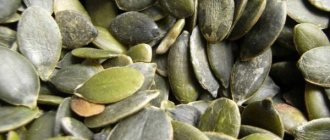The article talks about the time of collection and methods of drying rose hips.
Rosehip is a plant that grows everywhere in the Temperate climate zone. Belonging to the Rosaceae family, it blooms with beautiful flowers. Later, these flowers produce berries that have a lot of beneficial properties for people. They are collected to be used fresh or dried in cooking and medicine. The article will discuss when to collect rose hips and how to properly prepare them so that they can be stored longer.
When can you collect rose hips for drying, in what month?
In botany, there are up to 400 species of rose hips. Each of them has its own characteristics, which include the time of fruit ripening. Therefore, it is impossible to say exactly when to harvest the fruits of the plant for harvesting.
Rose hip.
Should be considered:
- plant type
- climatic conditions of the region where it grows
- weather conditions from spring to autumn of a particular year
- condition of the berries (they should be red or orange, but still firm, elastic, not affected by rot or disease)
Typically, rosehip berries become ripe, maximally concentrating useful substances, from late summer to mid-autumn, more specifically, from August to October. A warm, dry, windless day should be devoted to this activity. You need to have time to prepare rose hips before the onset of the first frost - frozen berries will lose the lion's share of their benefits.
IMPORTANT: If you believe in omens, collect rose hips for drying on October 1, the day of Arina Shipovnitskaya.
Collection of rose hips.
By the way, it is important to choose not only the right time to collect rose hips, but also the right place. It must be environmentally friendly. Berries collected near industrial enterprises, near railways and highways, in large cities, in contaminated areas may contain more harmful substances than useful ones.
IMPORTANT: Rosehip leaves, flowers, and roots are also harvested for medicinal purposes. Raw materials are collected at different times of the year.
You can read about the benefits of various parts of the rose hip plant in the article “Rose hips, flowers, roots and leaves: beneficial and medicinal properties, contraindications for men and women. Does rosehip thicken or thin the blood, is it diuretic or not, does it weaken or strengthen?”
Rules for collecting berries for drying
Rose hips are usually harvested in early autumn
In order for the harvest of dried rose hips to be truly useful and of high quality, you need to know where and how to properly collect the berries of the plant. It is no secret that fruits tend to absorb all harmful substances that are in the environment.
Collection in city parks, front gardens and courtyards is not recommended, as there is a possibility that the berries have been damaged by gases emitted by numerous vehicles and various industries. Today this is the main problem of large cities. That is why it is better to harvest in “wild” places, forest belts away from the bustle of the city and gas pollution, despite the fact that rose hips grow almost everywhere in our region.
It is very important that the weather when harvesting fruits is moderately wet or dry. It is unacceptable to pick ripe fruits in the rain. Excess moisture absorbed into the fruits can negatively affect the condition of the collected berries, preventing them from being properly dried.
The wild rose from which rose hips are harvested comes in two varieties:
- The first has a high content of vitamins and microelements - after tearing off the stalk, a wide round hole remains on the berry;
- The second type, the so-called dog rose, has the least number of useful properties - after tearing off, a pentagon-shaped hole remains on the berry.
Dog rose is known for its low content of nutrients
When harvesting, it is better to choose the first type of berries for their rich mineral and vitamin composition. In addition, it is necessary to collect fruits in environmentally friendly places and pick them before they are fully ripe.
Hard skin with a matte surface and protruding sepals indicate that the berries are ready for picking and further drying in one way or another. They need to be picked together with the stalk, so that the vitamin C contained in the berries is fully preserved; during the drying process, they will disappear on their own.
At what temperature and for how long should rose hips be dried in an electric and gas oven?
The simplest and most affordable way to dry rose hips is in a gas or electric oven.
- Place the berries that you have chosen for drying on a baking sheet in one layer, not too tightly.
- Place the baking sheet with the rose hips in the oven.
- The oven temperature should be minimal, from 40 to 60 degrees Celsius.
- To ensure air access to the rose hips during drying, do not close the oven door tightly.
- Dry the rose hips in this way for 10-12 hours.
- Don't forget to stir the berries every 2 hours.
Drying rose hips in the oven.
Storage and use of dried rose hips
You can store rose hips at home for 1-3 years, depending on the quality of materials and placement conditions. It is optimal to place the dried berries in a glass container and cover with cloth or gauze folded in 2-3 layers. Berries are also placed in bags made of thick paper or cotton or linen fabric. The bags are tied with a cord or braid.
The following are prepared from dried berries:
- teas;
- vitamin infusions;
- medicinal decoctions, etc.
To prepare tea you will need 15-20 fruits and water (1 l). Dried raw materials must be ground in a mortar or using a coffee grinder. Then you need to place the rose hips (1-2 tbsp) in a brewing container with black tea and add heated water. The drink needs to be infused for up to 5 minutes. When pouring tea into a cup, use a fine sieve.
To prepare a vitamin infusion, crushed berries must be placed in a thermos and filled with hot water, left for 2-3 hours and strained with a sieve or gauze. When preparing a drink in a thermos, it is not recommended to add standard tea (black, green). With regular consumption of the drink, metabolic processes in the body are improved, toxic substances are eliminated, blood composition improves, and skin tone is evened out.
You can add medicinal herbs and spices to tea with rose hips. Aromatic and healthy drinks are obtained by including sage, linden blossom, raspberry leaves, peppermint and currants, thyme, chamomile, cinnamon, ginger root, vanilla pods, star anise, cardamom, and dried apples. When using spices, it is necessary to take into account the need for time to brew an aromatic drink. Natural honey and lemon are added to the prepared drink.
Tea is drunk hot and not reheated. It is recommended to take into account that prolonged boiling destroys the vitamins in the berries. To brew tea, you can use young shoots and flowers, which contain vitamin complexes, flavonoids, tanning components, and essential oil extracts.
Rosehip is included in the following vitamin tea mixtures:
- To increase immunity and prevent vitamin deficiency, you can prepare tea from ground dried rose hips (1 tbsp) and oregano. Plant components are placed in hot water and infused for 15 minutes.
- For the following recipe you need the fruits of the bush, raspberry leaves, black currants in proportions 1:1:1. You can include rowan in the collection.
- To prevent vitamin deficiency, you need to mix the ground fruits of the bush (3 parts), lingonberries (1 part), the composition is optimal in the autumn-winter period.
- To tone and increase the body's defenses, rose hips (3 parts), dried and chopped carrots (3 parts), nettle leaves (3 parts), black currants (1 part) are required.
- For the vitamin collection you need rose hips (1 part), currant and raspberry leaves (1 part each), lingonberry leaves (2 parts).
- For the next collection you will need up to 5 varieties of rose hips (1-2 tbsp) with peppermint leaves (2-3 leaves each), as well as 5 strawberries. The ingredients are mixed, poured with heated water and left for 10-15 minutes.
- To improve the condition of the liver, rose hip tea (15-25 pieces) is needed. The berries are poured with boiling water (1.5 l) and left to steep for 1.5-2 hours. The drink can be infused in a thermos.
Drinking drinks with added rose hips is possible subject to some restrictions. It is recommended to drink tea in limited quantities for stomach ulcers, gastritis, high stomach acidity, and diabetes. During pregnancy, you should consult your doctor about the recommended dose of rose hips.
How and how long to dry berries and rose hips in an electric dryer?
If you are a summer resident or gardener, you simply need an electric dryer for berries and fruits! It is very convenient to use for harvesting rose hips.
- Place rosehips in dryer trays in a single layer.
- Set the temperature to 65 degrees Celsius.
- Dry the rose hips for 12-14 hours.
- Don’t be lazy to change the trays every two hours so that the berries dry evenly.
Drying rose hips in an electric dryer.
Is it possible to freeze rose hips for the winter in the freezer?
Answering the question whether it is possible to freeze rose hips, I will answer this way: it is possible, and it is necessary. But first we prepare the berries: we sort them, wash them, dry them.
- The prepared fruits are laid out in one layer on boards.
- The rose hips are frozen for 2 hours.
- After 2 hours, the berries can be placed in containers or freezer bags and stored in the freezer.
This type of shock freezing can also be applied to rosehip leaves or roots.
If you want to freeze half berries, then the only difference from the above method is that before freezing, the rose hips are cut in half and the seeds are removed.
You can make a healthy infusion from frozen rose hips. To do this, put a handful of fruits in a thermos, add freshly boiled water, and after 6 hours the infusion is ready.
How to properly dry berries and rose hips in the fresh air?
The natural way of drying rose hips, when the fruits of the plant dry naturally in the fresh air, is not the easiest or most correct. Firstly, it can drag on for a whole month. Secondly, during drying, some of the fruits may deteriorate, and those that remain will lose some of their beneficial properties. But if you still decide to choose this method, proceed as follows:
- place the rose hips in a single layer in trays or pallets
- cover trays or pallets with paper or thin natural fabric
- leave the rose hips to dry in a windless place, hidden from direct sunlight
- stir the berries periodically
- dry them for 2-4 weeks
Drying rose hips in the open air.
How to store rose hips?
Having prepared healthy berries for the winter, you also need to take into account the rules for storing the product:
- First of all, remove the stems from the dried fruits.
- Scatter the berries into clean storage containers, preferring rag bags or glass jars. At the same time, the product should not be tightly sealed, otherwise the fruits may spoil. Use gauze folded in several layers or a circle of light fabric as a lid.
- Store the workpieces in a dark, well-ventilated room with a constant temperature of +5 to +18 degrees.
- You can use the berries in compotes, infusions or teas 3-4 days after drying.
By following these rules, you can preserve the healthy fruits for two years.
Are the beneficial substances of rose hips preserved during the drying process?
Drying wild rose fruits is the most ancient method of preserving berries for long-term storage. In this form, their peel petrifies, the constituent elements become very dense in the process of loss of moisture, but do not lose their healing qualities.
At the same time, it is important to properly organize the drying process so that the water from the fruits of this prickly plant does not evaporate instantly, but gradually without direct exposure to sunlight. With proper conservation of medicinal raw materials, the shelf life of dried rose hips lasts up to 3 years . In a dry and well-ventilated place, the berries can last longer, but every year their healing power weakens.
Traditional healers strongly recommend adding fruits that are no more than a year old to all medicinal preparations without exception.
Did you know? Rose hips, compared to other parts of the plant, accumulate beneficial substances to a greater extent. They contain: vitamins A (2.6 mg), PP (0.6 mg), E (1.7 mg), C (650 mg), iron (11.5 mg), manganese (19 mg), copper (37 mg), molybdenum (4.3 mg), zinc (1.1 mg), potassium (23 mg), calcium (28 mg), magnesium (8 mg), sodium (5 mg), phosphorus (8 mg) ), pectins, sucrose, pentosans, ascorbic and citric acids, riboflavin.
How to choose the right dried rose hips
Many of us are deprived of the opportunity to collect and dry rose hips ourselves and purchase them at the market or in stores. In this case, there is a risk of purchasing an incorrectly dried product that has lost its healing properties. Therefore, you should choose berries very carefully.
First of all, examine the surface of the fruit. There should be no white coating on them. Rose hips dried in accordance with the technology do not crumble when pressed. The skin springs with a barely audible crunch. The fruits are whole, not split or broken, they are cleared of sepals. The stalks are also removed. Of course, there should be no debris or foreign objects among the berries.
These recommendations will help you choose high quality dried rose hips. But still, to be on the safe side, you can dry the berries yourself at home.
How can you use rose hips?
And now, you have gone through all the stages, done painstaking work, and you have a healing source of vitamins, but the question probably arises - how to use this goodness so that it is tasty and healthy? There are many options, surely everyone can find something for themselves. From dried rose hips you can prepare:
- herbal tea;
- compote;
- jam;
- jelly;
- tincture;
- useful decoction for skin and hair.
But no matter how you use the dried product, you need to wash it thoroughly before using it. And after preparing any drink, you must pass the liquid through a sieve or a homemade filter consisting of three layers of gauze. This action will filter out unnecessary rosehip particles.
Let's look at the most delicious and healthy options for using dried rose hips:
Decoction
To prepare a pleasant and life-giving drink, you need to pour boiling water (about a liter or one and a half) into a handful of berries and cook over low heat for about fifteen minutes. After this, you need to let the drink cool and you can drink it. If desired, you can add honey and sugar.
Video: how to brew rose hips correctly.
Kissel
Another tasty option for using dried rose hips is jelly. It’s easy and simple to prepare: pour about 100 grams of berries with two liters of water, boil over low heat for about fifteen minutes. Then carefully strain the liquid, add one glass of sugar, and pour in 50 grams of starch, previously diluted in cool water, and bring the mixture to a boil. If desired, you can add a few slices of lemon.
Decoction in a thermos
A more gentle method of brewing berries, which allows you to preserve more nutrients than the first option. To make the drink, you must first grind three tablespoons of rose hips and pour them with a liter of boiling water. It is best to infuse in a thermos from night to morning.
Video: preparing a decoction in a thermos.
Decoction in a water bath
You can prepare a rosehip decoction as follows: 2 tbsp. l. crushed berries are poured with 2 glasses of hot water (but it should not be boiling!), after which you need to place the liquid with the berries in a water bath for 15 minutes. Drink the decoction strained and cooled.
Preparing rose hips for the winter is not so difficult, but there are so many benefits, benefits and pleasure! By following all the rules for collecting, drying and storing, you can use delicious berry-based drinks to replenish the balance of strength, strengthen the body and increase immunity without expensive medications and vitamins.
Method and shelf life of the finished product
Dried rose hips should be stored in closed containers: containers with a lid, glass jars, wooden boxes, fabric bags, etc. It is permissible to use plastic containers made of polymers approved for use with food products.
However, it is better to choose natural materials for storage - paper, glass, fabric or wood. In this case, the rosehip will retain its natural properties longer.
The shelf life of dry berries is 2 years. If mold forms on them over time, it means that the technology was violated during the drying process or the raw materials were not completely dried. This product should not be eaten.











